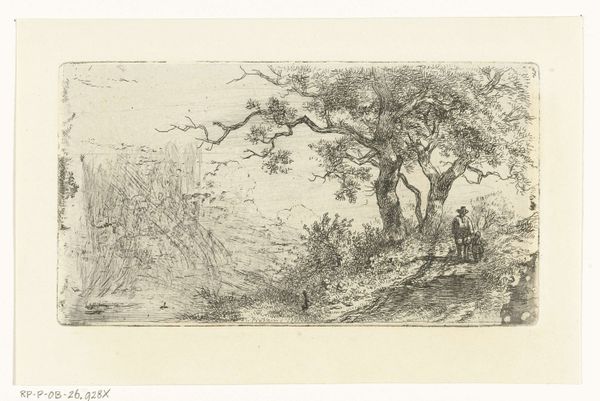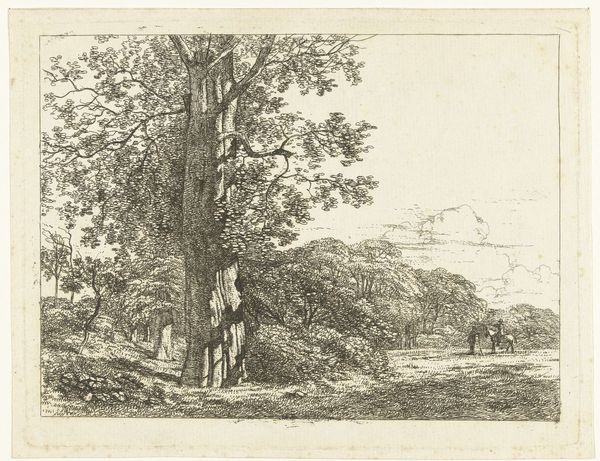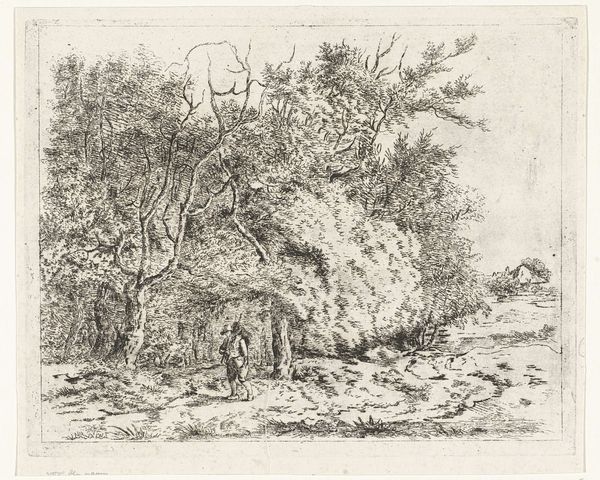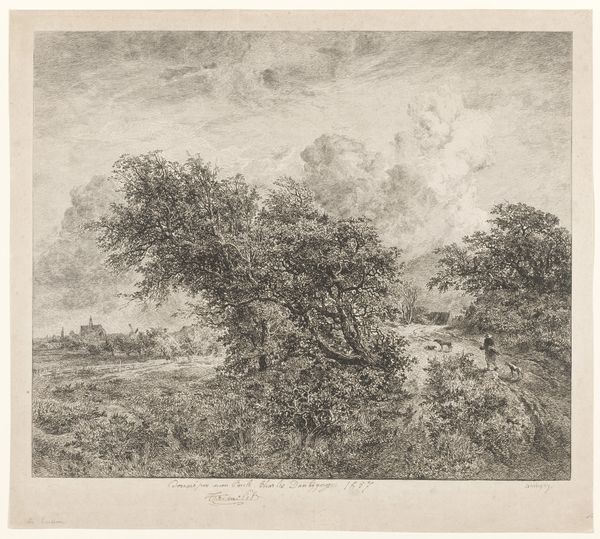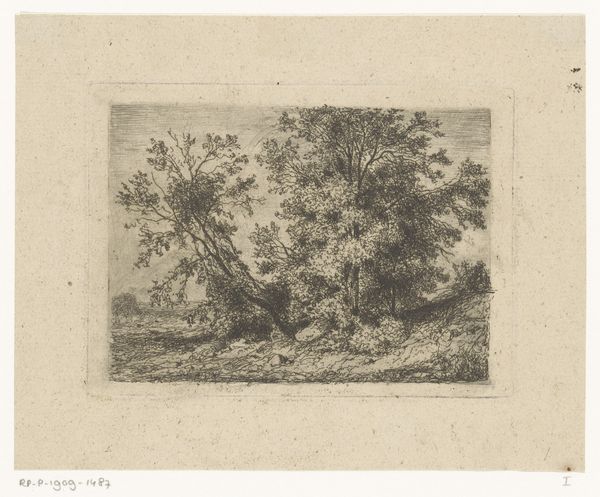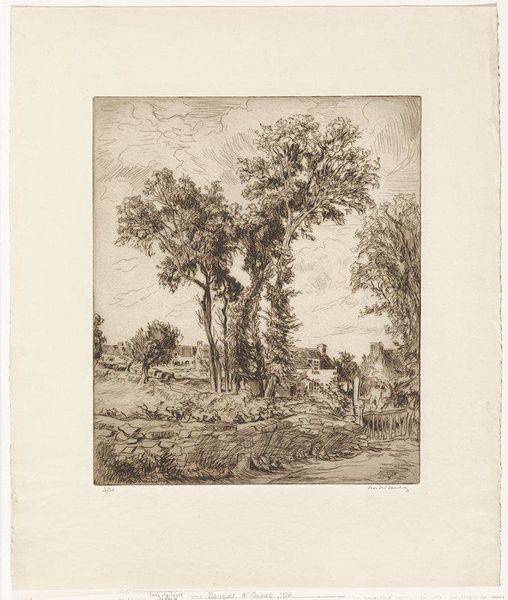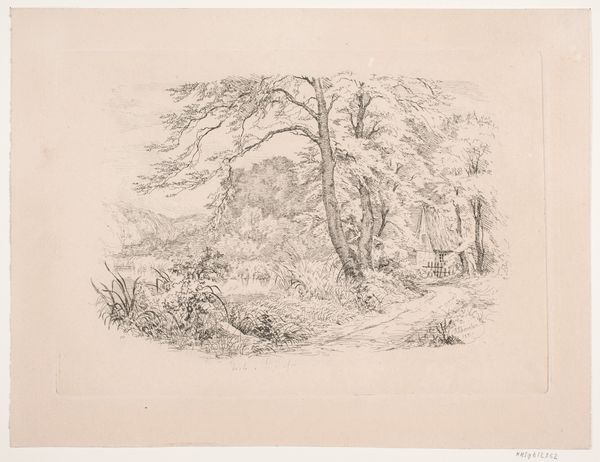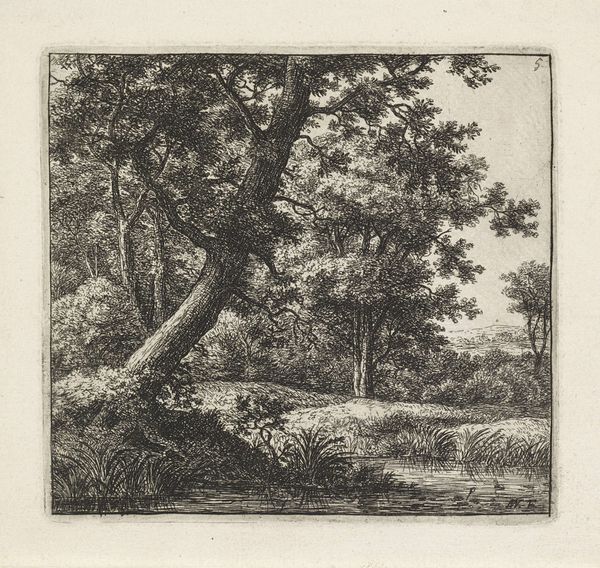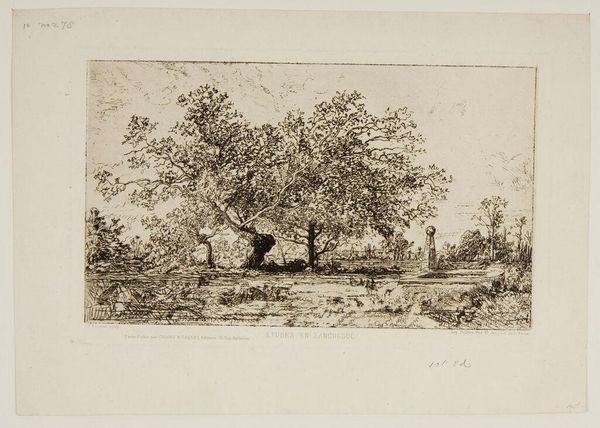
drawing, print, etching
#
drawing
# print
#
etching
#
landscape
#
etching
#
romanticism
Dimensions: height 144 mm, width 164 mm
Copyright: Rijks Museum: Open Domain
Editor: Here we have Albertus Brondgeest’s “Landscape with Oak Trees and Man near Water,” etched sometime between 1796 and 1849. It feels like such a still and contemplative scene. What strikes you most about the composition of this landscape? Curator: Immediately, the dominance of the oak takes precedence. Its formidable structure fills a significant portion of the pictorial space, directing the viewer's eye through a calculated recession into depth. Notice how Brondgeest employs delicate hatching and cross-hatching to differentiate the textures of the foliage from the smoother surfaces of the water and sky. Editor: The way he uses light and shadow is so subtle. Almost ethereal. Curator: Precisely. The interplay of light, strategically placed, models the forms and generates a palpable atmosphere. Are you observing how the artist juxtaposes the intricacy of the tree's branches against the open expanses? It lends itself to notions of the sublime and the individual's insignificance when facing nature. Editor: So, you see this as less about the actual location and more about Brondgeest exploring these broader philosophical ideas through form? Curator: Indeed. The landscape transcends its representational function. It’s in the contrast, scale and detail that the drawing truly communicates its intention. Can you notice how your eyes are invited into a hierarchy of detail? Editor: Yes, you can really appreciate his use of the etching technique to create these intricate lines, highlighting both the immense scale of the oak, but also that of nature itself. This gives one a very grounded feeling about this very moving work. Curator: I concur; an engagement with Romantic ideals and picturesque design are certainly embodied.
Comments
No comments
Be the first to comment and join the conversation on the ultimate creative platform.
